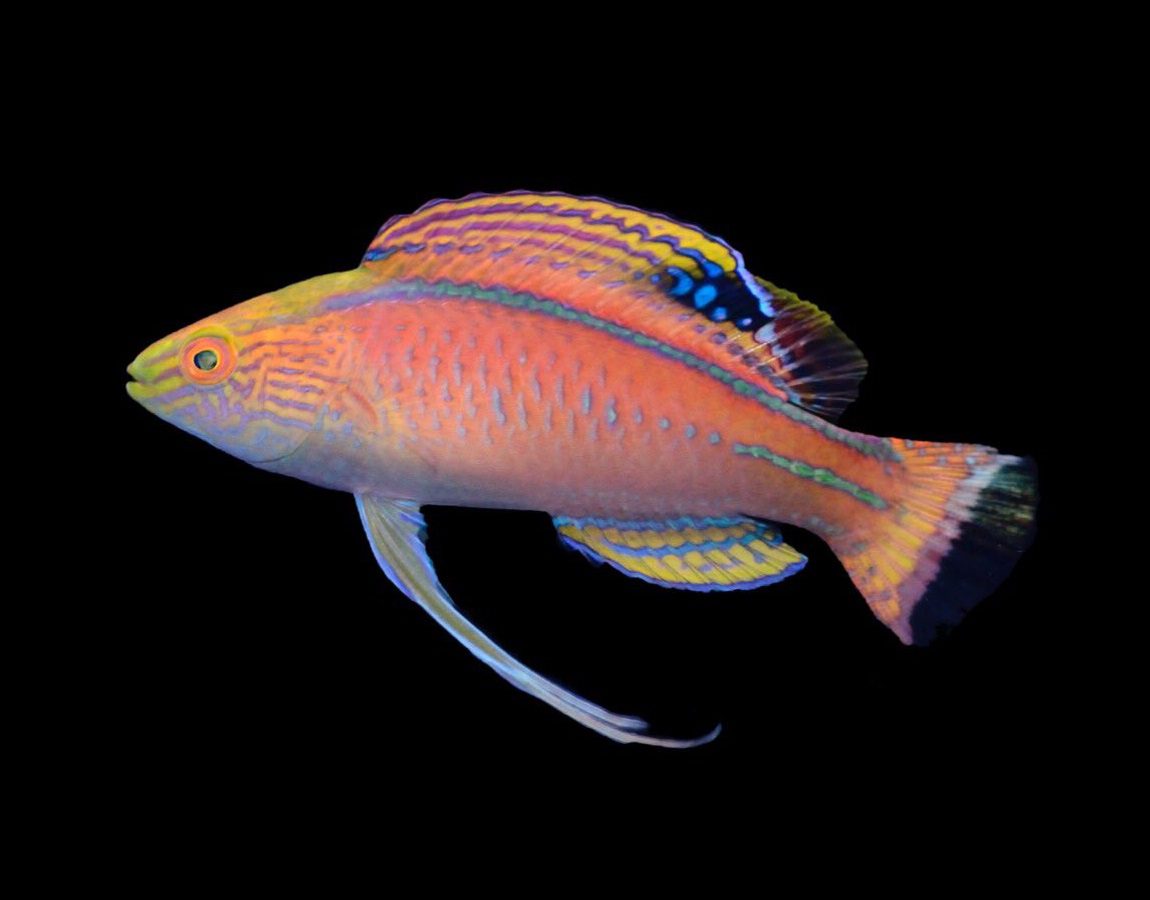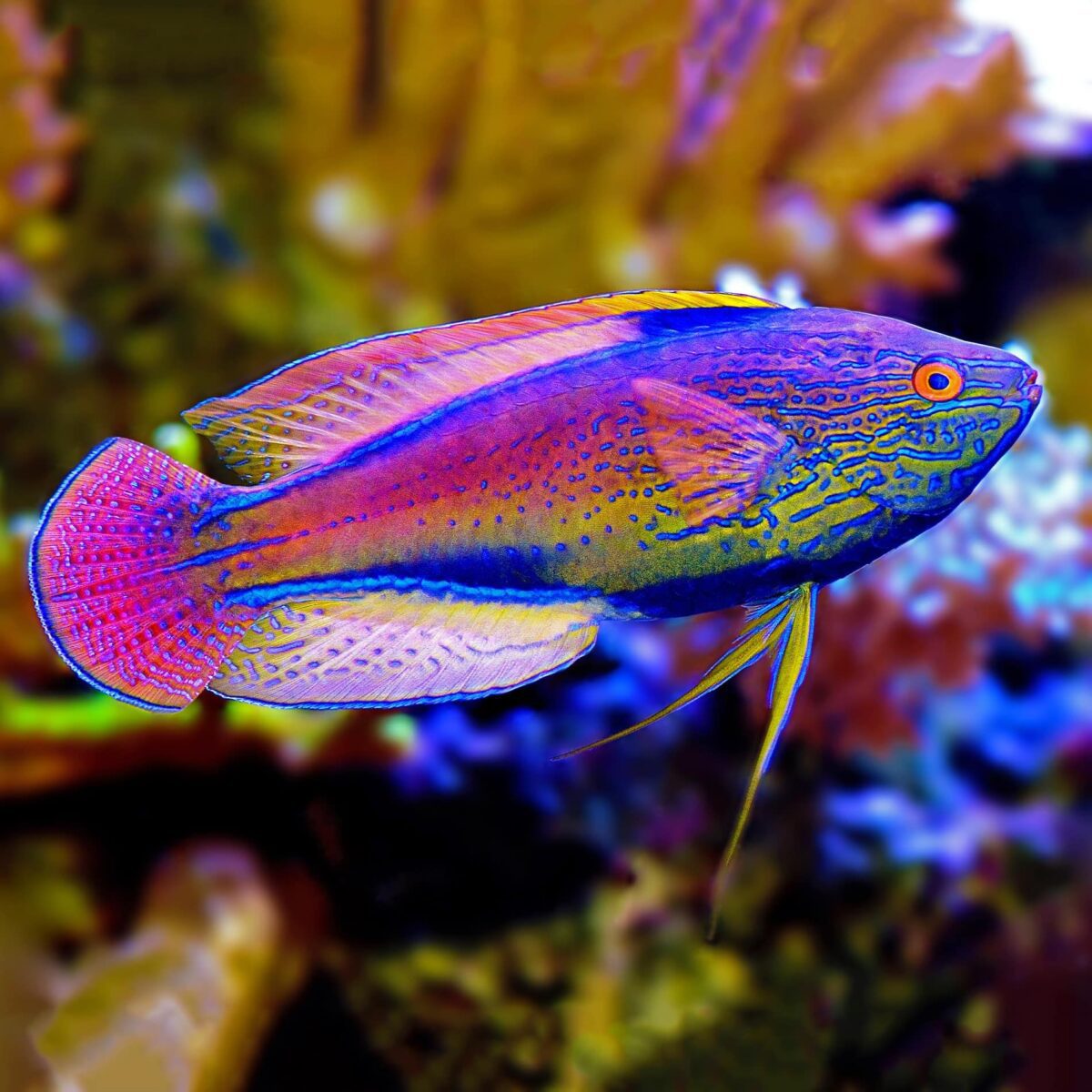Have you ever dreamed of creating an underwater paradise that captivates your heart and thrives with life? Imagine the dazzling Cirrhilabrus briangreenei as the centrepiece of your aquascaping design. But how do you ensure this vibrant beauty survives and flourishes in your reef aquarium? Let’s dive into the world of aquascaping with Cirrhilabrus briangreenei and discover how to turn your aquarium into a breathtaking ecosystem.
Key Takeaways:
- Learn about the stunning Cirrhilabrus briangreenei, a widespread species of wrasse for reef aquariums.
- Explore the taxonomy, physical characteristics, and behavior of Cirrhilabrus briangreenei.
- Discover the ideal aquarium requirements and care tips for maintaining a thriving Cirrhilabrus briangreenei ecosystem.
- Understand the dietary preferences and breeding behaviour of Cirrhilabrus briangreenei.
- Gain insights into the challenges and rewards of keeping Cirrhilabrus briangreenei in your reef aquarium.
Introduction
Welcome to the second section of our species guide on Cirrhilabrus briangreenei. In this section, we will delve into the taxonomy and classification of this captivating fish species and explore its natural habitat and distribution.
Taxonomy and Classification
Cirrhilabrus briangreenei is a member of the family Labridae and falls under the genus Cirrhilabrus. Its taxonomic classification is as follows:
- Kingdom: Animalia
- Phylum: Chordata
- Class: Actinopterygii
- Order: Perciformes
- Family: Labridae
- Genus: Cirrhilabrus
- Species: Cirrhilabrus briangreenei
| Attribute | Description |
|---|---|
| 1. Scientific Name: | Cirrhilabrus briangreenei |
| 2. Common Names: | Brian Greene’s Fairy Wrasse, Greenes Fairy Wrasse |
| 3. Origin: | Western Pacific Ocean |
| 4. Family: | Labridae |
| 5. Social: | Peaceful, does well in groups |
| 6. Domain in Tank: | Middle to bottom layers |
| 7. Minimum Tank Size: | 55 gallons (208 liters) |
| 8. Diet: | Carnivore; requires a diet of small meaty foods and zooplankton |
| 9. Breeding: | Carnivore requires a diet of small meaty foods and zooplankton |
| 10. Care Level: | Moderate |
| 11. pH Range: | 8.1 – 8.4 |
| 12. Water Hardness: | 8 – 12 dKH |
| 13. Temperature in F/C: | 72-78°F (22-25.5°C) |
| 14. Common Diseases: | Susceptible to marine ich and other common saltwater diseases |
| 15. Life Span: | 5+ years |
| 16. Size: | Up to 3 inches (7.6 cm) |
| 17. Best Tank Mates: | Other peaceful fish, such as clownfish, gobies, and other wrasses, avoid large predatory fish |
Natural Habitat and Distribution
Cirrhilabrus briangreenei is naturally found in the coral reefs of the Western Pacific Ocean, specifically in the region encompassing the Solomon Islands and Papua New Guinea. These vibrant fish species prefer shallow reef environments with abundant coral formations and rocky outcrops.
They can often be observed darting in and out of coral crevices, seeking out small crustaceans and other invertebrates to feed upon. Due to their specific habitat requirements, Cirrhilabrus briangreenei is not commonly found in regions or aquariums outside their native range.
Physical Description and Characteristics
Cirrhilabrus briangreenei, also known as Brian Greene’s Fairy Wrasse, is a species of wrasse renowned for its stunning physical attributes. Its vibrant colours and intricate patterns make it a coveted addition to any saltwater aquarium.
Colours and Markings
The males of Cirrhilabrus briangreenei boast a remarkable combination of yellow, green, and blue hues that create a dazzling display. The intricate patterns and markings adorning their body and fins further accentuate these vibrant colours. The females, however, exhibit a more subdued colouration, typically in shades of pink or orange.
Gender Differences
One of the notable distinctions between male and female Cirrhilabrus briangreenei is their size and colouration. While males display the striking colours and patterns mentioned above, females are smaller and have a more modest appearance with their pink or orange hues. These gender differences contribute to the visual diversity within a community aquarium.
Varieties
There are no distinct varieties or recognized subspecies within the Cirrhilabrus briangreenei species. However, individual fish may exhibit slight variations in colour intensity or pattern, adding to the uniqueness of each specimen.
Grades
Grading systems are not commonly used for Cirrhilabrus briangreenei, as the appeal of each fish lies in its unique combination of colours and markings. Aquarists typically select individuals based on personal preferences, making grading less relevant for this species.
Behaviour and Temperament
Cirrhilabrus briangreenei is known to be a peaceful and generally non-aggressive fish, making it compatible with a wide range of tank mates. However, it should be noted that some wrasses can exhibit territorial behaviour, so it is essential to provide adequate space and hiding spots to avoid potential conflicts. This species is renowned for its lively swimming patterns and engaging behaviour, adding an active and dynamic element to any saltwater aquarium.
Aquarium Requirements
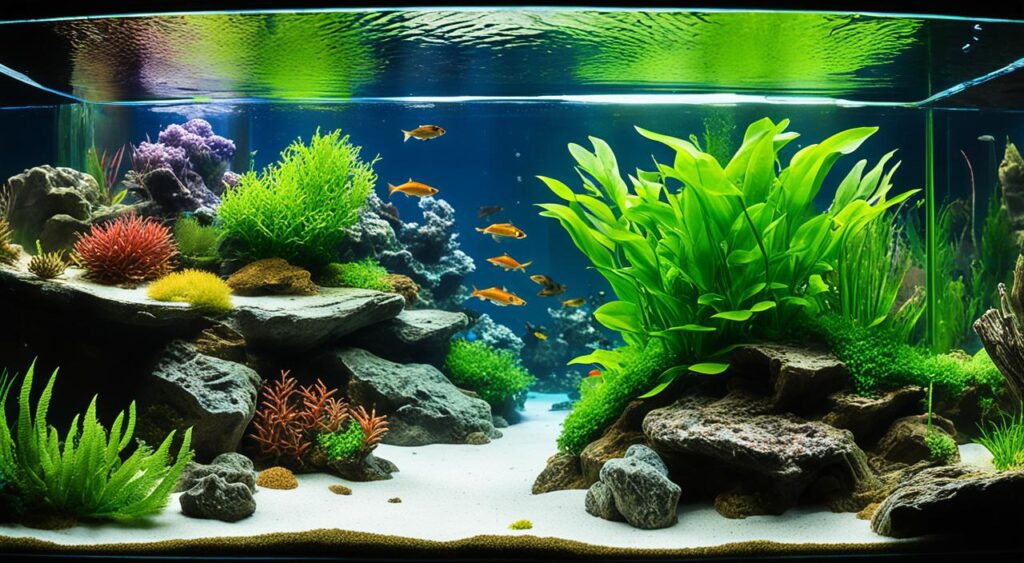
When setting up an aquarium for Cirrhilabrus briangreenei, it is essential to provide a suitable environment that mimics its natural habitat. Consider the following requirements to ensure the health and well-being of these stunning fish:
Ideal Tank Size and Layout
The ideal tank size for Cirrhilabrus briangreenei is at least 50 gallons, providing ample swimming space and territories for the males. Creating a well-structured tank layout with caves, rocks, and ample hiding spots is essential for the fish to establish their territories and feel secure.
Water Parameters
Maintaining appropriate water parameters is crucial for the health of Cirrhilabrus briangreenei. The recommended water temperature should be between 74°F and 78°F (23°C to 26°C). Additionally, the salinity should be maintained at 1.023 to 1.025 specific gravity, with a pH range of 8.1 to 8.4. Monitoring ammonia, nitrate, and nitrite levels is essential to ensure optimal water quality.
Suitable Tank Mates and Potential Conflicts
Cirrhilabrus briangreenei can coexist with other peaceful marine fish species. However, caution should be exercised when choosing tank mates, as some fish may exhibit aggressive behaviour towards the Cirrhilabrus briangreenei. Selecting tank mates with similar temperament and size is best to avoid conflicts.
Compatibility with Live Plants and Invertebrates
While Cirrhilabrus briangreenei can be kept in a tank with live plants and invertebrates, caution should be exercised as they may feed on small invertebrates. It is advisable to place live plants and invertebrates that can withstand the fish’s potential grazing or nipping behaviour.
Care
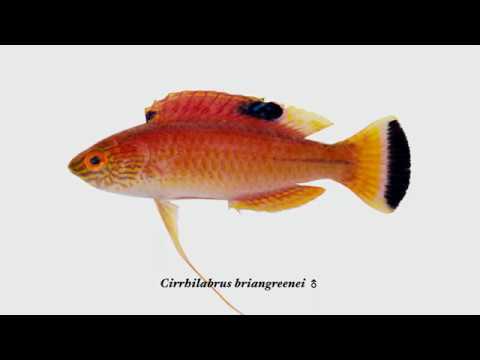
Proper care for Cirrhilabrus briangreenei is essential for their overall health and well-being. Responsible fishkeepers must meet their specific care requirements and ensure a thriving environment. Here are some essential aspects of care to consider:
Diseases
Like any other fish, Cirrhilabrus briangreenei are susceptible to various diseases. Monitoring their health regularly and taking preventive measures to minimize the risk of illnesses is crucial. Some common diseases that may affect Cirrhilabrus briangreenei include:
- Ich (White Spot Disease): This parasitic infection manifests as white dots on the fish’s fins and gills.
- Marine Velvet: This disease is caused by a parasitic protozoan and is characterized by a velvet-like coating on the fish’s skin.
- Fin Rot: Bacterial infection that leads to the deterioration of the fish’s fins, causing them to fray and disintegrate.
Maintaining excellent water quality is crucial to prevent the onset of these diseases. Regularly testing the water parameters and ensuring appropriate filtration and circulation systems will help create a healthy environment for your Cirrhilabrus briangreenei. Additionally, quarantining new fish before introducing them to the main tank and practising good hygiene in the aquarium can further reduce the risk of diseases.
Should you notice any signs of illness in your Cirrhilabrus briangreenei, it is vital to quarantine the affected fish and promptly seek appropriate treatment. Consulting a veterinarian or an experienced fishkeeper can help you identify the illness accurately and recommend suitable remedies.
By prioritizing the health and well-being of your Cirrhilabrus briangreenei and taking preventive measures to minimize the risk of diseases, you can ensure that these beautiful fish thrive in your aquarium.
Diet and Feeding
Feeding Cirrhilabrus briangreenei in an aquarium requires careful consideration of their dietary preferences. As a primarily carnivorous species, these fish feed on small invertebrates in their natural habitat. To ensure their overall health and well-being, it is crucial to replicate their natural food sources as closely as possible.
Dietary Preferences
Cirrhilabrus briangreenei has a specific preference for live and frozen foods. They particularly enjoy small crustaceans such as brine shrimp, mysis shrimp, and copepods. These sources provide essential nutrients and are rich in protein, which is crucial for their growth and development.
Recommended Foods and Feeding Schedule
When it comes to providing a well-rounded diet for Cirrhilabrus briangreenei, it is essential to offer various food options. In addition to live and frozen foods, you can include high-quality pelleted or flake foods formulated explicitly for predatory marine fish.
Feeding your Cirrhilabrus briangreenei small, frequent meals throughout the day rather than one large feeding is recommended. This feeding schedule mimics their natural feeding patterns in the wild and allows them to consume smaller food items simultaneously.
Tips on Ensuring a Balanced and Nutritious Diet
To ensure a balanced and nutritious diet for Cirrhilabrus briangreenei, it is essential to consider the following tips:
- Offer various options to create a balanced diet that resembles their natural food sources.
- Rotate between live, frozen, and pelleted/flake foods to provide a diverse nutritional profile.
- Monitor their feeding behaviour and adjust the amount of food accordingly. Overfeeding can lead to health issues and water quality problems.
- Consider occasional supplementation with vitamin-enriched foods or supplements to ensure they receive essential vitamins and minerals.
- Remove any uneaten food from the aquarium promptly to maintain water quality and prevent waste accumulation.
Providing a balanced and nutritious diet is crucial for the health and vitality of Cirrhilabrus briangreenei. By replicating their natural feeding patterns and offering various food options, you can help ensure their overall well-being in the aquarium.
Breeding and Reproduction
Breeding Cirrhilabrus briangreenei in captivity can be challenging, as they require specific conditions and behaviours for successful reproduction. To ensure a successful breeding program, it is essential to understand the sexing process, breeding behaviour and conditions, and the care required for the eggs and fry. However, there are also specific challenges that breeders may encounter.
Sexing
Sexing Cirrhilabrus briangreenei can be challenging, as no evident external characteristics differentiate males from females. However, males typically exhibit more vibrant colours and elaborate fin patterns than females. A careful observation of their behaviour and interactions can also provide clues to determine their sex.
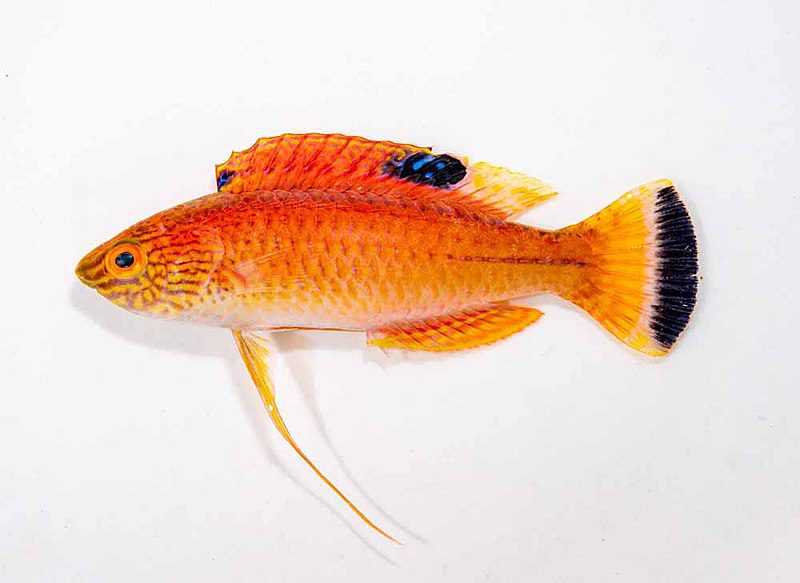
Breeding Behavior and Conditions
Cirrhilabrus briangreenei is a protogynous hermaphrodite, meaning that they are born as females and have the potential to change sex to become males. In a breeding setup, it is essential to have a ratio of one male to multiple females to ensure successful mating. The aquarium should be well-established, with suitable hiding spots and ample swimming space.
The water conditions in the breeding tank should be maintained within specific parameters, including temperature, salinity, and pH, to mimic the natural environment and promote breeding behaviours. A stable and consistent environment is crucial for triggering the breeding process.
Care of Eggs and Fry
Once the breeding pair has successfully mated, the female Cirrhilabrus briangreenei will lay adhesive eggs on a suitable substrate such as rocks or coral branches. Providing a separate rearing tank to transfer and care for the eggs and fry away from potential predators is essential.
Caring for the eggs and fry involves maintaining pristine water quality, providing suitable lighting, and ensuring proper feeding. The eggs typically hatch within a few days, and the fry must be fed with appropriately sized live or frozen foods to ensure their proper growth and development.
Challenges in Breeding in Captivity
Breeding Cirrhilabrus briangreenei in captivity poses several challenges. These include the difficulty in sexing the fish, the specific breeding behaviours and conditions required, and the care and maintenance of the eggs and fry. The success rate of breeding programs can vary and may require careful monitoring and adjustments to optimize breeding outcomes.
Others in the Family: Cirrhilabrus
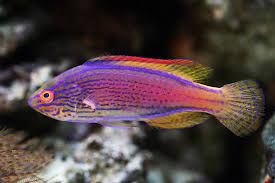 | Add colour and playfulness to your saltwater fish tank with Cirrhilabrus Lineatus, the perfect addition to any aquascaping design! |
Summary
In conclusion, Cirrhilabrus briangreenei is a remarkable fish that adds beauty and vibrance to any reef aquarium. This species guide has provided valuable insights into its taxonomy, physical description, aquarium requirements, care, feeding, breeding, and more.
By understanding the unique characteristics and needs of Cirrhilabrus briangreenei, enthusiasts can create a suitable environment that mimics its natural habitat, ensuring its well-being and overall health. Maintaining excellent water quality, providing a balanced diet, and monitoring for any signs of diseases or health issues are crucial for its care.
With its stunning colours and mesmerizing patterns, Cirrhilabrus briangreenei can be the centrepiece of a saltwater reef aquarium. By following the guidelines outlined in this species guide, you can provide the best conditions for this captivating fish, allowing it to thrive and delight experienced and novice aquarists alike.

